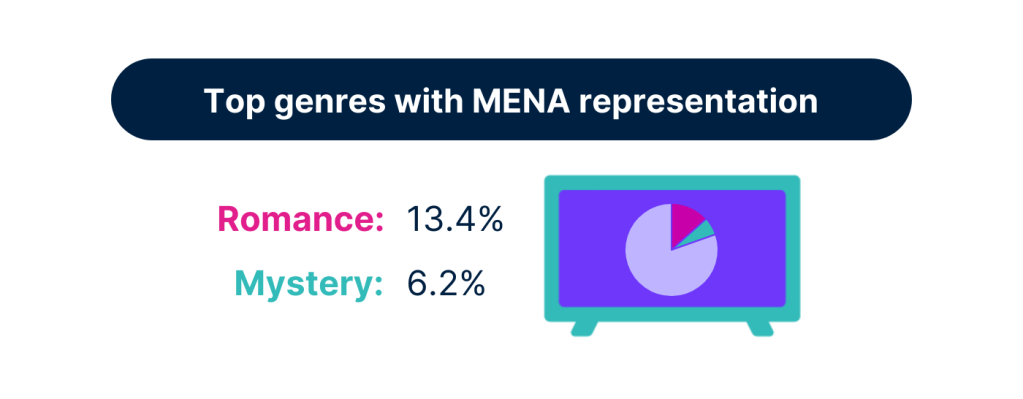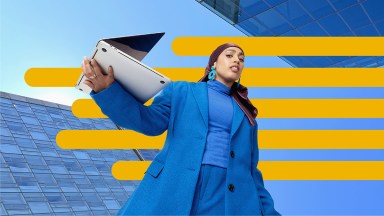If you don’t tell your own story, someone else will. For people from Middle East/North Africa (MENA), this has indeed been a challenge when it comes to the stories that they see in the media. Nielsen data shows that MENA presence on screen stands at just 2.5% across 1,500 broadcast, cable and streaming TV shows. But it’s not just the media that underrepresents this group. In fact, the U.S. Census still classifies MENA people as white, leaving a population that must fight harder for resources because they are under represented and undercounted. So, what can the media industry do to increase MENA representation on screen and tell more accurate stories about their experiences?
To explore some ideas and opportunities, we spoke with Dr. Evelyn Alsultany, Associate Professor, Department of American Studies and Ethnicity at University of Southern California, and educational consultant for the MENA Arts Advocacy Coalition (MAAC), an organization that advocates for greater visibility of Middle Eastern, North African, and South Asian talent in Hollywood.
“We have consumed so many images and storylines that stereotype Arabs, Iranians and Muslims, and of course many other groups. Their harm is not in one story, but rather in their repetition and in the lack of diversity in images. The result is that the stereotypes come to represent an entire group of people and rob them of their humanity.”
Dr. Evelyn Alsultany
Q: From 2019-2021, Nielsen data shows that the genres where MENA talent is most often seen are biographies, action sports and dark comedies. From your research/experience, what stories about MENA culture are being told on screen? Are there stereotypes or accurate representation/depictions?
A: Hollywood films and TV shows are not “just entertainment.” Stereotypical images and their repetition throughout history influence support for policies that harm Arabs and Muslims. They have tremendous impact and consequences. MAAC built greater awareness about MENA in the Entertainment industry in 2017 as a new diversity category, helping the community gain recognition and allowing companies like Nielsen and others to properly measure what MENA on-screen representation looks like. But it still continues to fall short.
There have been some notable changes over the last two or three decades. After 9/11, there was an increase in “good” Arab and Muslim characters in TV shows like 24, Homeland and Jack Ryan. However, these characters appeared as U.S. patriots who either worked for the FBI or CIA or who were willing to fight and die for the U.S. to prove their patriotism. It is an improvement over portrayals as terrorists but it is nonetheless a very limiting character that defines Arabs and Muslims as “good” or “bad” in relation to terrorism and in relation to a very narrow conception of patriotism.
Q: As streaming and digital platform content increases, are we seeing more MENA culture/people on screen?
We have shifted from the days when most people watched the same set of shows on network television to such a wide array of programming offered through streaming services. We also have more access to non-U.S. productions. There is a lot of potential here in diversifying the images we consume of MENA people.
Historically,non-Arabs would play Arab roles and would use costumes and accents to convey Arabness. Anthony Quinn, who was Mexican, played Arab characters in several movies: The Road to Morocco, Lawrence of Arabia (1962), and Lion of the Desert (1981). As recently as 2014 and 2016, Gerard Butler was in Gods of Egypt, and both Christian Bale and Joel Edgerton in Exodus: Gods and Kings were all painted brown to play MENA Characters. Most of the roles left available for MENA actors over the last two decades have been stereotypical characters. Even when MENA talent is present, there is still a need to expand the stories that are told about them. Nielsen’s Gracenote Inclusion Analytics data shows that romance was the top genre where MENA talent appeared on screen in 2021—almost twice more than in mystery, which is the genre with the second highest MENA share of screen. And when we look at the programs under the romance genre, 40% is in Spanish-language novelas, which is limited to the Spanish audience.

Luckily, we have content creators like Ramy and Nasim Pedrad helping to change the landscape. But we need more streamers and networks to buy MENA content from MENA creators and put it on air. With TV more global than ever, there is a market for it. We’ve seen a concerted and notable effort in Hollywood to expand and improve representations especially in response to the Muslim Travel Ban proposed in 2015. As a result, we saw an increase in representations of Muslims outside of terrorism. It is quite refreshing. These include CBS’ FBI, Fox’s 9-1-1: Lonestar, the CW’s DC Legends of Tomorrow, Freeform’s The Bold Type, NBC’s Transplant, Hulu’s Ramy, Peacock’s We Are Lady Parts, and most recently Disney+ Moon Knight. These shows have been impacting the MENA audience in moving ways for their accurate and thoughtful representation.
Q: What else can be done to drive change?
The most effective approach will be those that seek to rectify a history of representations rather than a momentary crisis.
Dr. Evelyn Alsultany
Over the last five years, some wonderful resources have emerged to support Hollywood in diversifying representations. The MENA Arts Advocacy Coalition, MAAC, works to educate the industry at large on the underrepresentation of MENA in entertainment and has created a database of MENA and South Asian creatives to connect emerging and established talent from these regions to the industry. The WGA launched a Middle Eastern Writers Committee to create awareness for MENA Writers, and SAG-AFTRA recently created a National MENA Committee to advocate for performers.
But devising effective solutions requires developing a fuller understanding of the problem. The problem is not one movie or TV show, but how a history of stereotypical representations has constructed negative meanings about Arabs (and Muslims) that have real world consequences. The problem is that MENA performers have been portrayed as terrorists so many times that it has come to represent the entire community of 300 million people. Therefore, we need to encourage streamers and networks to invest in MENA talent and hire MENA writers.
We tend to try to solve problems when they flare up or when there is a crisis, like the Muslim ban. But the most effective approach will be those that seek to rectify a history of representations rather than a momentary crisis.



